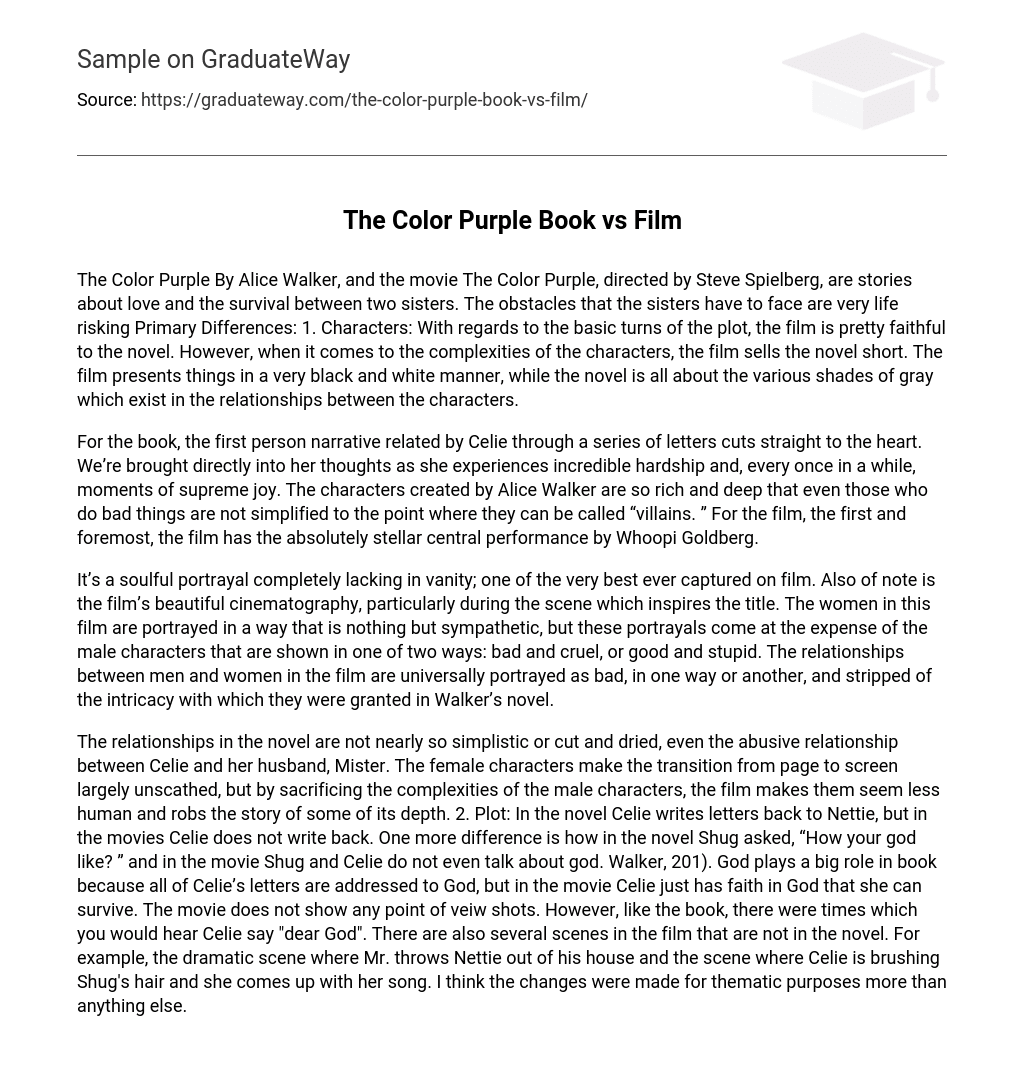The Color Purple By Alice Walker, and the movie The Color Purple, directed by Steve Spielberg, are stories about love and the survival between two sisters. The obstacles that the sisters have to face are very life risking Primary Differences: 1. Characters: With regards to the basic turns of the plot, the film is pretty faithful to the novel. However, when it comes to the complexities of the characters, the film sells the novel short. The film presents things in a very black and white manner, while the novel is all about the various shades of gray which exist in the relationships between the characters.
For the book, the first person narrative related by Celie through a series of letters cuts straight to the heart. We’re brought directly into her thoughts as she experiences incredible hardship and, every once in a while, moments of supreme joy. The characters created by Alice Walker are so rich and deep that even those who do bad things are not simplified to the point where they can be called “villains. ” For the film, the first and foremost, the film has the absolutely stellar central performance by Whoopi Goldberg.
It’s a soulful portrayal completely lacking in vanity; one of the very best ever captured on film. Also of note is the film’s beautiful cinematography, particularly during the scene which inspires the title. The women in this film are portrayed in a way that is nothing but sympathetic, but these portrayals come at the expense of the male characters that are shown in one of two ways: bad and cruel, or good and stupid. The relationships between men and women in the film are universally portrayed as bad, in one way or another, and stripped of the intricacy with which they were granted in Walker’s novel.
The relationships in the novel are not nearly so simplistic or cut and dried, even the abusive relationship between Celie and her husband, Mister. The female characters make the transition from page to screen largely unscathed, but by sacrificing the complexities of the male characters, the film makes them seem less human and robs the story of some of its depth. 2. Plot: In the novel Celie writes letters back to Nettie, but in the movies Celie does not write back. One more difference is how in the novel Shug asked, “How your god like? ” and in the movie Shug and Celie do not even talk about god. Walker, 201). God plays a big role in book because all of Celie’s letters are addressed to God, but in the movie Celie just has faith in God that she can survive. The movie does not show any point of veiw shots. However, like the book, there were times which you would hear Celie say “dear God”. There are also several scenes in the film that are not in the novel. For example, the dramatic scene where Mr. throws Nettie out of his house and the scene where Celie is brushing Shug’s hair and she comes up with her song. I think the changes were made for thematic purposes more than anything else.





